How smart home voice assistants improve energy efficiency
Discover how smart home voice assistants can help you manage your energy usage and save on your electricity bill.



How smart home voice assistants improve energy efficiency
Discover how smart home voice assistants can help you manage your energy usage and save on your electricity bill.
The way we manage our homes and our energy usage is evolving every day, and it’s time we evolve with them if we want to keep them running at the speed of life.
Voice recognition is one of the many technologies revolutionizing our homes and lifestyles. It’s not uncommon to have a smart voice assistant on your mobile device, and now, throughout your home.
Here, we’ll explore how voice recognition technology can help you run a more energy-efficient home and reduce your carbon footprint.
Smart home adoption has grown dramatically in the last few years, with 45% of homes in the U.S. having at least one smart device.
Speech recognition research began in the 1970s, but it wasn't until widespread smart home usage that voice assistants started becoming commonplace. Now, the number of voice assistant users in the U.S. is expected to reach more than 157 million by 2026.
Voice assistants offer solutions to many of the everyday issues facing homeowners and smartphone users. They can give directions, provide weather forecasts and answer those annoying questions you can’t get out of your head. But now, smart home technology can also help solve even bigger problems, like how to reduce our energy consumption.
In the not-so-distant past, you might have wondered about your energy usage, felt surprised by an unexpectedly high monthly cost, or worried that your roommate wasn’t paying their fair share of your apartment electricity bill. Now, we know what energy efficiency means, and we understand that lowering our energy use will have a positive impact on our bank account and on the planet. But how do we manage our energy usage in a responsible way?
If you’re new to smart home or voice assistant technology, it can seem a bit unfamiliar at first. You might feel like you’re talking to yourself or talking to no one at all. But once you adjust, you’ll start to get a lot out of your new smart home device.
There are several technologies that contribute to how a smart voice assistant works, including text-to-speech, voice recognition and natural language processing (NLP). When you say an activation phrase, the software begins listening and analyzing your speech. Then it accesses information to get the answer you’re looking for and delivers it using a synthesized voice.
Most smart voice assistants come built into the smart devices you already use, but they can also be integrated into other devices that you can install and use throughout your home. The most common voice assistant platforms include:
Voice assistants can integrate within numerous locations and devices, including mobile devices (smartphones, smartwatches, tablets), smart speakers and smart home devices (smart thermostats, smart refrigerators, smart TVs).
Before you can start using voice commands, you’ll need to train your device and its speech recognition technology to know how to interact with you. You may need to go through a training session for the assistant to learn your voice and understand your commands.
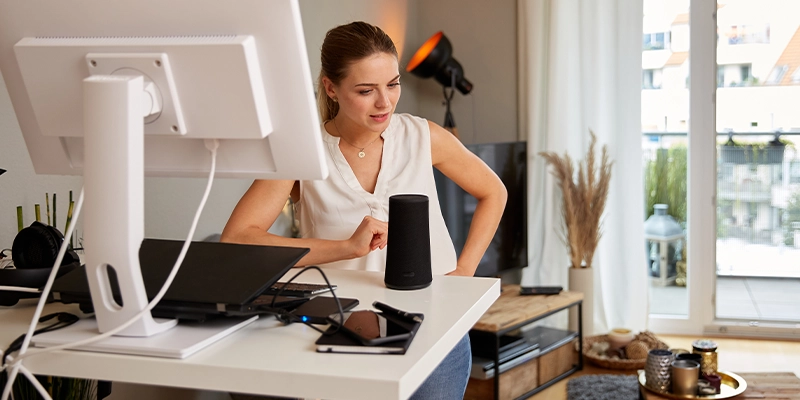

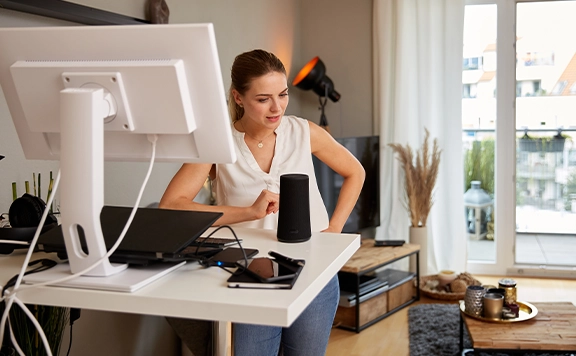
Now that you know all about the technology that powers our smart homes, it’s time to learn what we can do with it and how we can use it to save energy and improve efficiency.
You can use voice commands to adjust your energy usage in real time. Ask your smart assistant to turn off the lights in a certain room or adjust the thermostat before you leave for the day. You might also use a voice command to close the shades or shut off appliances.
Using a programmable thermostat in your smart home will help you set routines that make saving energy a seamless and automatic process. Some smart thermostats can even monitor when you’re home or away and make adjustments accordingly. Other automations you can leverage include the lights turning themselves off when no one is home or in the room or setting the HVAC to eco mode when an exterior door is left open.
In addition to automated routines, you can set more general schedules around your house to save energy and keep it operating efficiently. You can also create routines with lights or other devices connected to smart plugs, so they turn off and on at set times. This can be done with both interior and exterior lights, so you never forget to shut them off or unnecessarily waste electricity.
You may have a smart home, but that doesn’t mean you want or need to control your whole house at once. With smart assistants, you can manage your energy usage room by room. Many smart assistants allow you to create zones or spaces, often linking to other connected devices, so you can manage multiple rooms from one spot for maximum efficiency.
The great thing about smart homes is that they can be controlled when you’re not actually at home. Most voice assistants and smart devices are available via mobile apps, so you can manage them on the go. This means you can monitor and adjust your settings from wherever you are.
Smart home technology makes it possible to love your home in a whole new way when you feel that it’s working to meet your needs. Here’s how:
If your smart home contains smart plugs or energy monitoring devices, you can program them to deliver alerts based on your energy consumption. For example, a device in your home might send you a text alert when the power goes out, or when something that should be powered down is drawing too much power. You can use these alerts to improve your energy efficiency and lower consumption.
In addition to real-time alerts, your smart plugs and monitors are also constantly gathering data, which you can access to see shifts and trends over time. This will help you understand peak hours for energy consumption, as well as seasonal or weather-based changes. Understanding these insights will help you make better decisions about how and when you use electricity.
Voice technology powered by your smart home devices can walk you through how to use your products to save energy. These tutorials will help you program your thermostat or set schedules for lights, blinds and other energy savers. You can also explore online tutorials that walk you through a variety of smart home devices to show you how to maximize their impact. Find them on sites like Udemy, Instructables and YouTube.
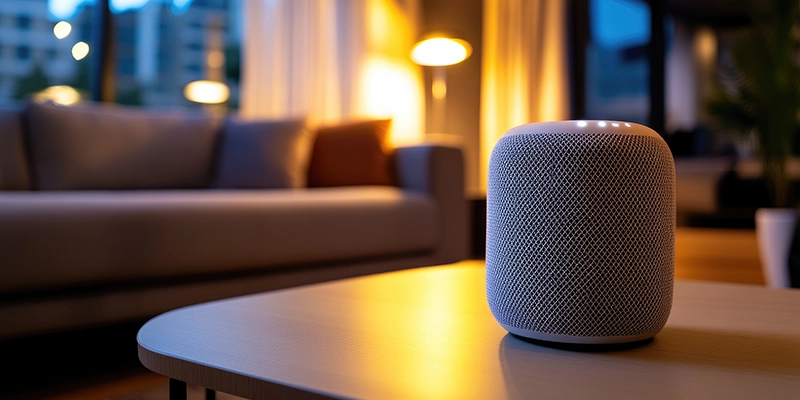
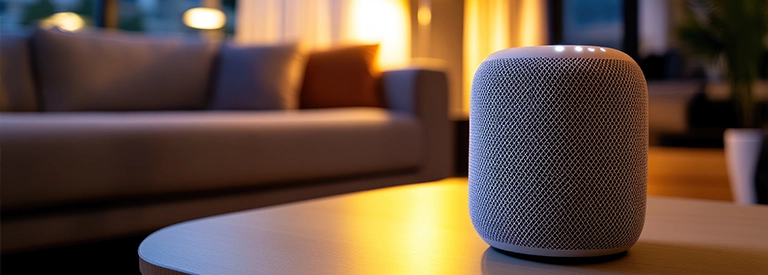
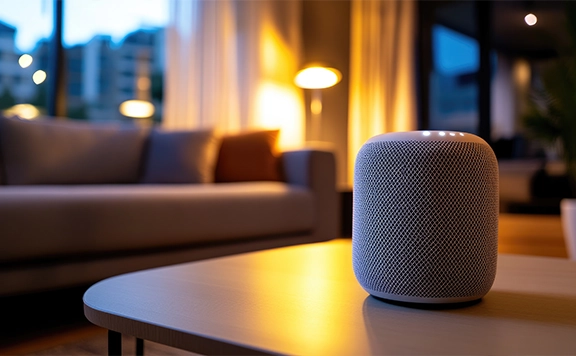
One of the best things about smart home technology is that so much of it can be seamlessly integrated to work together.
Smart thermostats often run on automated schedules or use sensors to detect when no one is home or everyone is asleep, lowering energy usage. They can also connect to devices that gather outside temperature readings and make adjustments accordingly.
Your light bulbs can also communicate with your voice assistant and smart devices to know exactly when to power on and off. For example, you can set up your home automation to turn the lights on exactly when you need them, and turn them off when you don’t, so you save money on energy costs.
If you don’t have smart bulbs, smart plugs and outlets are another option. Smart plugs allow you to control when anything plugged into the outlet is powered. Some smart plugs come with remote controls, while others use voice assistants to connect to other smart devices.
Appliances made in the last few years are now almost entirely considered “smart.” That means they integrate seamlessly with your smart speakers or other smart devices so you can control and monitor them at your convenience. This can be a huge energy saver if, for instance, you keep tabs on your smart refrigerator, so you know when filters need to be replaced and when it should be cleaned. This can lead to more efficient appliance usage and less energy consumption in your home.
If you really want to get into the data of your energy consumption, you’ll need an energy monitoring system. You can buy monitors for single plugs or outlets, but for a more comprehensive picture, it’s better to install a smart meter. This will give you real-time insights into your energy usage so you can adjust and see what works for your home and lifestyle.
A smart meter or energy monitoring system is often equipped with an energy dashboard that will give you a bird’s-eye view of your energy consumption. With this kind of monitoring, you can view historical data, schedule alerts and notifications, and integrate with other smart home devices
Are you ready to go all-in on a smart home? Before you take the leap, here are a few things to think about:
When you’re using several different smart home devices, you’ll typically find that most are designed for integration. But not all of them play well with others, so it’s best to do your research in advance to find a solution that meets your needs.
Smart home devices take up a lot of bandwidth, and that means you need a strong and reliable WiFi connection. Because most of these devices are “always on,” you’ll need an Internet connection that is consistent and fast enough to keep up.
You want a home that operates like an extension of you and saves energy in the process. With the right combination of smart home devices and voice assistants, you can be more intentional with your usage.
If you don’t know where to begin, start with your mobile device. Explore the built-in voice assistant until you feel comfortable, then learn which devices are compatible with it.
Ultimately, the best voice assistant for you is the one you feel most comfortable talking to. When used wisely and responsibly, a voice assistant can make your smart home run more smoothly while using less energy. If you’re curious about other ways you can take control of your energy consumption, you can learn more here about how Reliant can help you save energy at home.
Alexa software ©2004-present Amazon.com, Inc. or its affiliates. All rights reserved.
Siri is a registered trademark of Apple Inc.
Google and Google Assistant are registered trademarks of Google LLC.
Bixby is a registered trademark of Samsung Electronics Co., Ltd. All rights reserved.
Select a category from the dropdown menu.